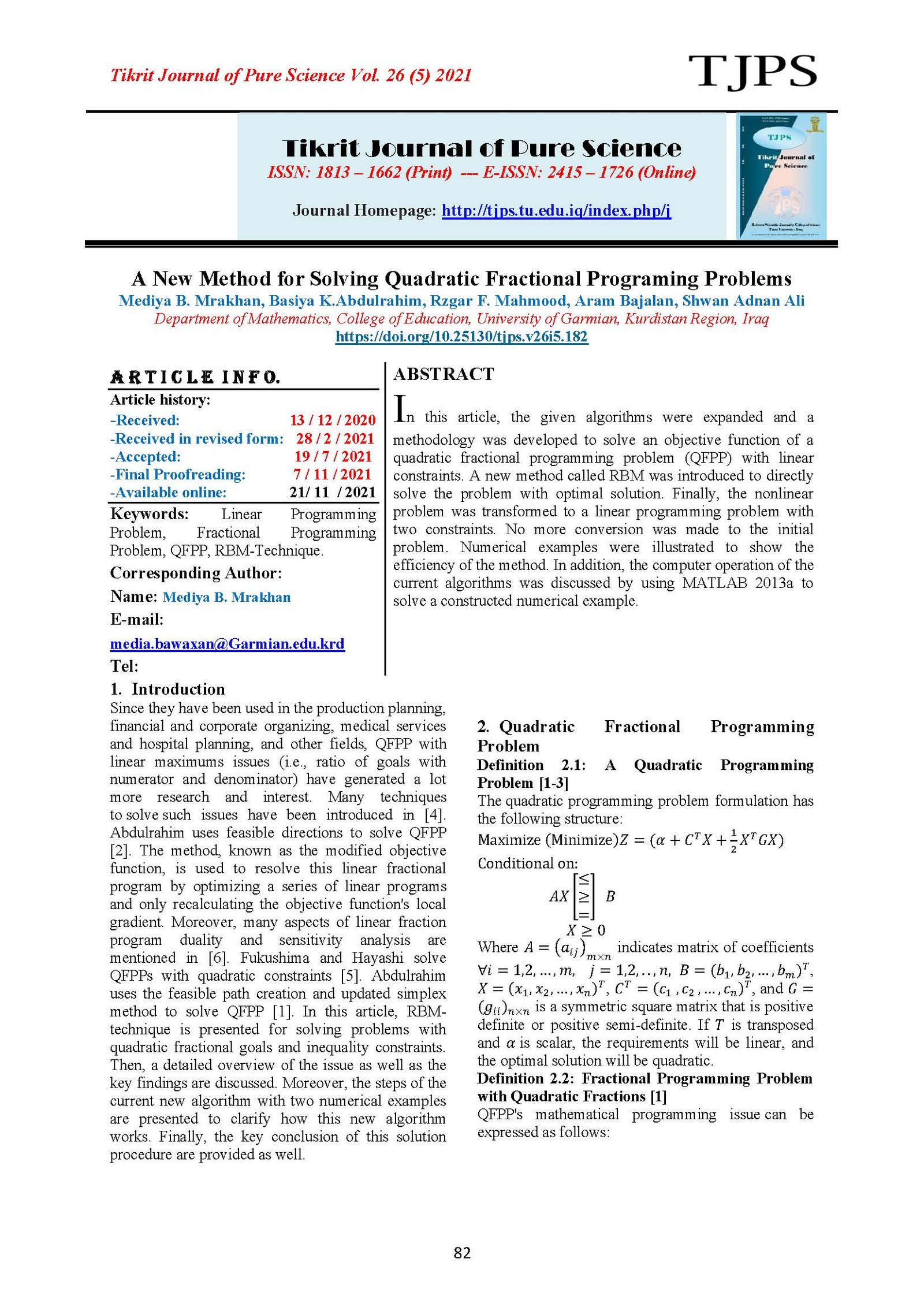A New Method for Solving Quadratic Fractional Programing Problems
Main Article Content
Abstract
In this article, the given algorithms were expanded and a methodology was developed to solve an objective function of a quadratic fractional programming problem (QFPP) with linear constraints. A new method called RBM was introduced to directly solve the problem with optimal solution. Finally, the nonlinear problem was transformed to a linear programming problem with two constraints. No more conversion was made to the initial problem. Numerical examples were illustrated to show the efficiency of the method. In addition, the computer operation of the current algorithms was discussed by using MATLAB 2013a to solve a constructed numerical example.
Article Details

This work is licensed under a Creative Commons Attribution 4.0 International License.
Tikrit Journal of Pure Science is licensed under the Creative Commons Attribution 4.0 International License, which allows users to copy, create extracts, abstracts, and new works from the article, alter and revise the article, and make commercial use of the article (including reuse and/or resale of the article by commercial entities), provided the user gives appropriate credit (with a link to the formal publication through the relevant DOI), provides a link to the license, indicates if changes were made, and the licensor is not represented as endorsing the use made of the work. The authors hold the copyright for their published work on the Tikrit J. Pure Sci. website, while Tikrit J. Pure Sci. is responsible for appreciate citation of their work, which is released under CC-BY-4.0, enabling the unrestricted use, distribution, and reproduction of an article in any medium, provided that the original work is properly cited.
References
[1] Abdulrahim, B. K. (2013). Solving quadratic fractional programming problem via feasible direction development and modified simplex method. Journal of Zankoy Sulaimani (JZS), 15(2), 45-52, https://doi.org/10.17656/jzs.10245
[2] Abdulrahim, B. K. (2017). Using feasible directions to solve quadratic fractional programming problem. Journal of Garmin University, 4(1), 56-71, https://doi.org/10.24271/garmian.6.
[3] Abdulrahim, B. K. (2017). Using pseudoaffinity to translation QFPP to LFPP. Journal of Garmin University, 4(13), 164-177, https://doi.org/10.24271/garmian.134
[4] Beck, A., Ben-Tal, A., & Teboulle, M. (2006). Finding a global optimal solution for a quadratically constrained fractional quadratic problem with applications to the regularized total least squares. SIAM Journal on Matrix Analysis and Applications, 28(2), 425-445, https://doi.org/10.1137/040616851
[5] Zhang, A. (2008). Quadratic fractional programming problems with quadratic constraints. Doctoral dissertation, Graduate School of Informatics, Kyoto University, Japan.
[6] Sulaiman, N., & Nawkhass, M. (2013). Solving quadratic fractional programming problem. International Journal of Applied Mathematical Research, 2(2), 303-309, https://doi.org/10.14419/ijamr.v2i2.838
